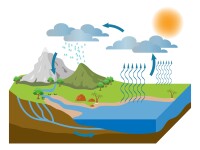Search
There are 34 results.
Category
Tag
Tag
All (116)
Active Learning (4)
Activities (5)
Analytics (4)
Assessments (11)
Asynchrony (5)
Authentic Activities (3)
Canvas (6)
Case Studies (2)
Collaboration (5)
Communication (7)
Community (6)
Competency-Based Education (3)
Content Creation (21)
Copyright (2)
Course Maintenance (4)
Course Materials (9)
Course Preparation (6)
Discussions (5)
Diversity (2)
Equity (1)
Faculty Presence (9)
Faculty Support (1)
Feedback (10)
Formative Assessments (8)
Game-Based Learning (2)
Gamification (1)
Generative AI (6)
Grading (8)
Group Work (2)
Images (3)
Inclusion (2)
Infographics (2)
Learning Objectives (2)
Multimodality (7)
Page Design (1)
Peer Review (1)
PowerPoint (2)
Presentations (2)
Qualitative courses (1)
Quantitative courses (1)
Representation (2)
Revising (2)
Rubrics (4)
Scaffolding (1)
Screen Readers (1)
Social Media (2)
Summative Assessments (1)
Synchrony (6)
Third-Party Tools (2)
Universal Design for Learning (UDL) (2)
Video (13)
Visual Accessibility (2)
Visual Design (2)
Workload (1)
Written Assignments (1)
10 Key Considerations for Online Course Development
Designing and delivering effective online courses requires careful consideration of numerous factors. As a result, it can be difficult to determine where to begin in the process, particularly for course developers and instructors who are new to online learning. This piece presents a curated list of resources aligned with 10 key considerations applicable across academic disciplines and degree programs.
Incorporating Multimedia in Your Course
Multimedia, which helps create an engaging and interactive online learning environment, has been shown to contribute to improved student performance (Cheng et al., 2009, p. 1). Though many online courses incorporate videos, they neglect to feature other forms of multimedia. And, while videos are a staple of multimedia use, there are other exciting options to consider: podcast episodes, graphics, and animations can all enhance course content, enriching the student experience. To maximize the benefits multimedia can provide, consider including these underutilized forms of multimedia in your course.
Developing AI Literacy Across the Curriculum: A Guide for Programs and Faculty
The rapid integration of AI into professional practice across disciplines makes AI literacy increasingly crucial, not just for technology-focused fields but for all areas of study. Even faculty who are skeptical of AI's value need to consider how it's transforming their disciplines. For example, scientific fields are seeing AI adoption in literature reviews, experimental design, and data analysis. In the humanities, AI tools are already being used for textual analysis, translation, and content creation. Creative disciplines must grapple with AI's impact on artistic production and copyright. Professional programs face increasing pressure from employers who expect graduates to understand AI applications in their field.
Six Strategies for Multimodal Content Delivery
If you’re developing a course with synchronous and asynchronous elements, you have a host of options for engaging students and delivering content. Research suggests that incorporating multiple modalities increases accessibility, engagement, and learning (Mick and Middlebrook, 2015; Margolis et al., 2017). With that said, it is important to be intentional about multimodal course design. Both synchronous and asynchronous methods of delivery are effective, but activities can be better suited to one or the other modality and synchronous time is often limited. Delivering selected content asynchronously can support students’ understanding of how information is organized and leave more time for interactivity in synchronous sessions.
Infographic Considerations
An infographic is a visual that combines text, graphics, diagrams, and graphs to present information. When used effectively, infographics can be a powerful tool to guide students through the learning process. As described by Krauss (2012), “Infographics ask for an active response from the viewer, raising the questions, ‘What am I seeing?’ and ‘What does it mean?’” (p. 10). Infographics also present information in an organized way, which can improve students’ critical thinking, analysis, and synthesis skills (Yildirim, 2016).
Presentation Best Practices Guide
Many online courses focus on written communication skills, featuring discussion posts, papers, and case study reports among other assignments. However, oral communication and presentation skills are just as integral to students’ success, and, indeed, many employers list presenting as one of the most desirable skills for job candidates (Suhadi et al., 2021).
Improving PowerPoints
Sharing information via PowerPoint presentations is a long-established strategy in higher education. Designing PowerPoint presentations for online courses can pose unique challenges; however, best practices can help overcome these hurdles. With time and attention, faculty and instructional designers can create engaging and purposeful presentations with lasting value.
The Art of Storytelling in Online Course Development: Enhancing Learning Across Fields and Assignments
Storytelling is a foundational element of communication that has allowed humanity to easily transfer information for millennia. From ancient fables to modern narratives, stories have the power to captivate, engage, and inform people across generations. In the realm of online learning, where a key goal is to replicate the complexity and richness of real-life experiences as closely as possible, storytelling can be a helpful pedagogical tool. When seamlessly integrated into learning environments, storytelling transcends simple information transfer.










